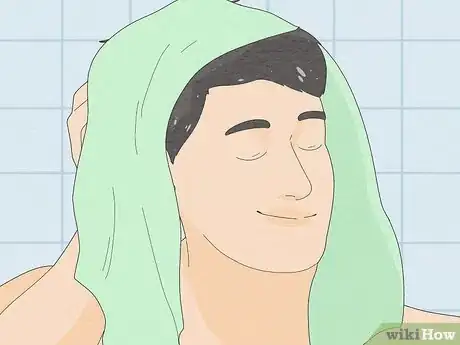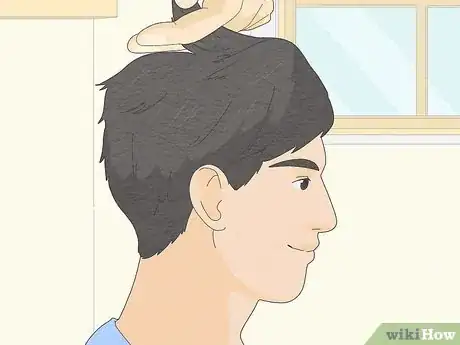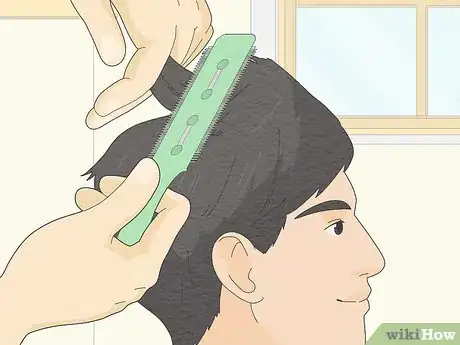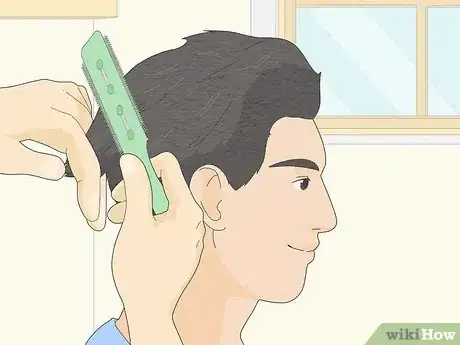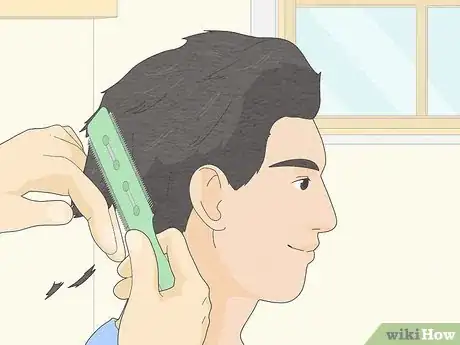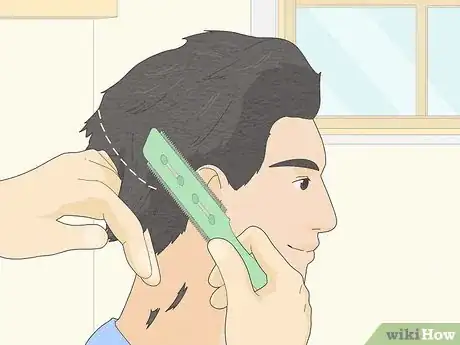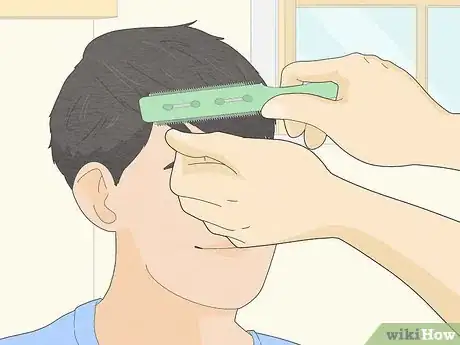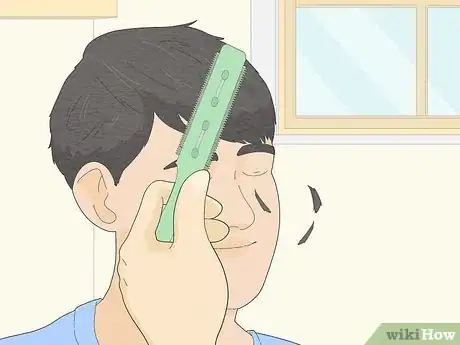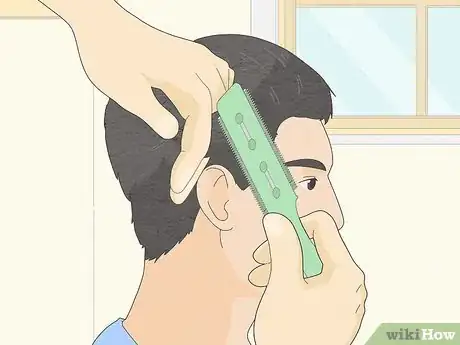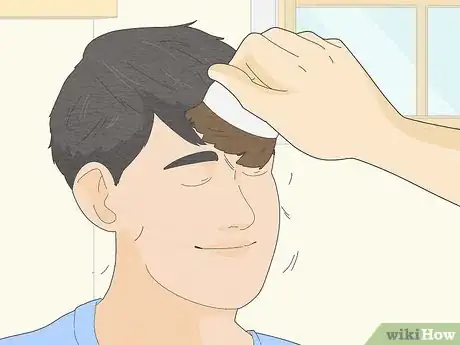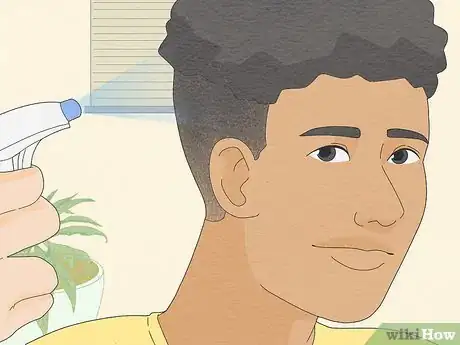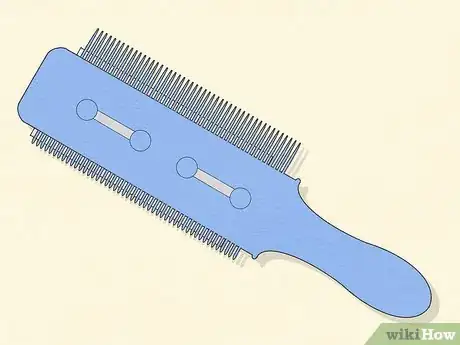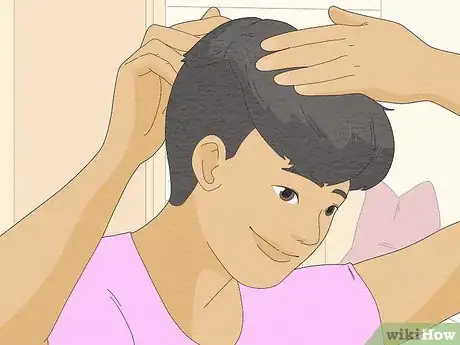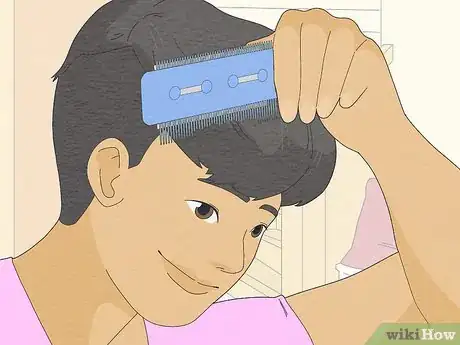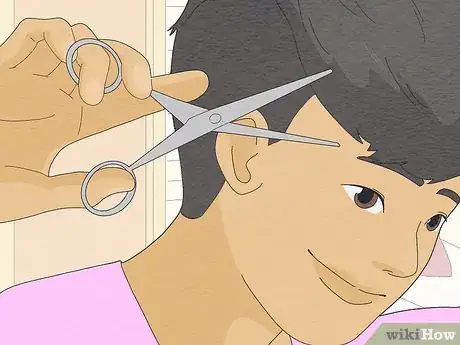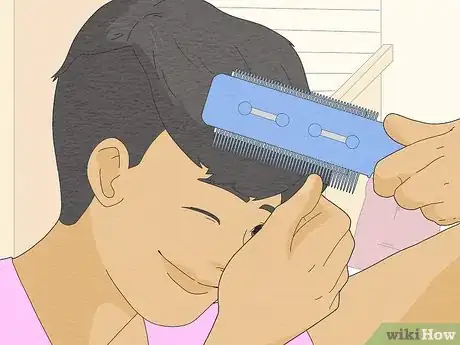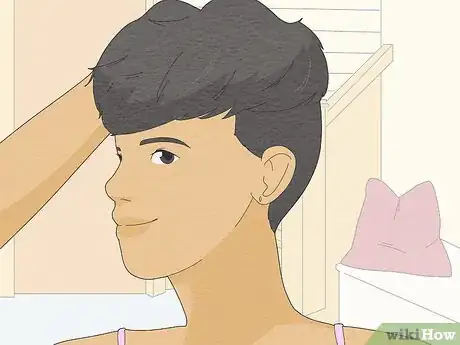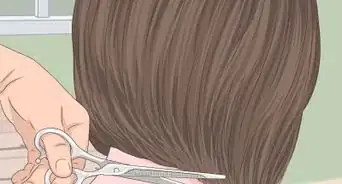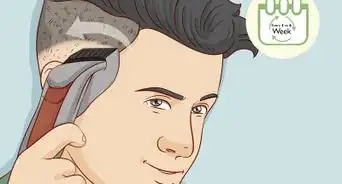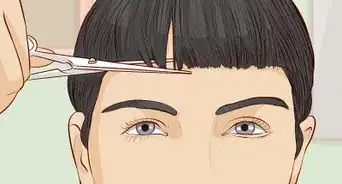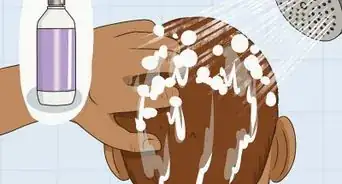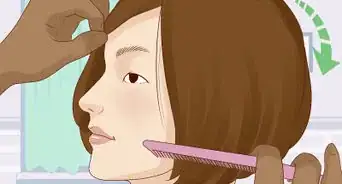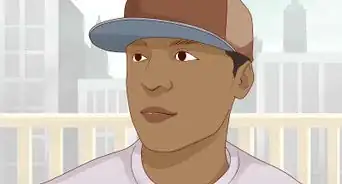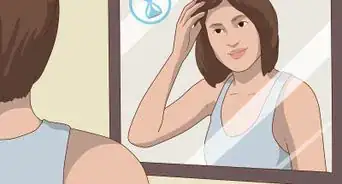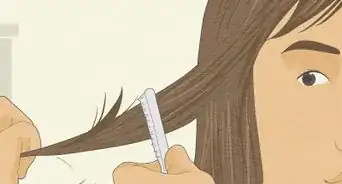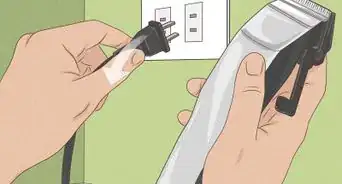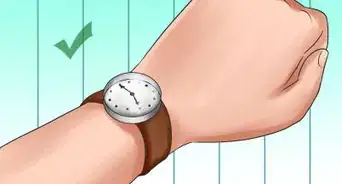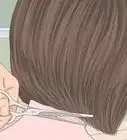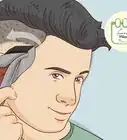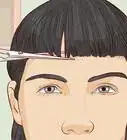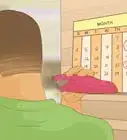X
This article was co-authored by Ashley Adams. Ashley Adams is a Licensed Cosmetologist and Hair Stylist in Illinois. She completed her Cosmetology education at John Amico School of Hair Design in 2016.
There are 16 references cited in this article, which can be found at the bottom of the page.
This article has been viewed 44,308 times.
Razor cutting is a versatile technique. You can use it to cut your hair shorter, add texture, or soften the ends. If done incorrectly, however, you could damage your hair. Fortunately, razor cutting is easy, and once you get the technique down, it can be really effective.[1]
Steps
Method 1
Method 1 of 2:
Trimming, Shaping, and Texturing Short Hair
-
1Start with short hair that is a few inches/centimeters long. This method is great if you already have short hair but want to trim it shorter. It will also help add texture to your hair while reducing volume. It would be easiest if your hair is the same length all around. If your hair is very long, cut it with hair-cutting shears so that it is a few inches/centimeters long.[2]
- This method assumes that you are cutting someone else's hair, but you can use it to cut your own hair. You may have to adjust the hand positions to be more comfortable. Just be careful when you do this by yourself — the safest way to cut your own hair is to have someone who is experienced help you. If you're cutting your hair on your own, make sure you have a mirror in front of you and behind you so you can see the back of your head.
-
2Make sure that your hair is dry, unless it is curly. If your is curly, wavy, or natural (i.e.: African textured), you should dampen it with water first. Cutting curly hair while it is dry can cause frizz and split ends. Dampening it with water will help prevent this from happening. (Since the curly hair will become straight).[3]Advertisement
-
3Pinch a strand of hair from the top of the head between your fingers. Make a V shape with your index and middle fingers. Pinch a thin of hair between them, with your palm facing outward. Pull the hair up and away from the top of the head until you reach the ends. Hold it at a 90-degree angle to the top of the head so you can see it.[4]
- The thin strand of hair should be a little narrower than the length of your index finger.
- Keep this first section perpendicular to the front hairline, where the center part would be.
-
4Cut into the hair with a straight-back razor. Position the razor right below your fingers. Make short, upward cuts towards your fingers. As you cut, the hair will fall away from your fingers.[5]
- Use a straight-back-razor with guard teeth for this. It is different from a razor comb in that the teeth are made from metal and are much shorter.
-
5Continue to work in horizontal rows towards the back of the crown. Keep pinching and cutting strands of hair all along the front hairline, spanning from temple-to-temple. Once you finish cutting the hair along the hairline, create another row just behind the first one. Continue working your way towards the back of the crown, right where the head starts to curve downward.
-
6Angle your fingers to cut the hair shorter in the back. Pinch a strand of hair on the back-center of the head between your index and middle fingers. Angle your fingers so that the hair on the top edge of the strand touches the base of your fingers, and the hair on the bottom edge sticks out between your fingertips. Trim away the hair under your fingers with the razor.[6]
- The angle depends on how short you want the back and sides to be. Try to match the angle to the curve of the client's head, however.
- Keep your palm facing outward, and the top of your hand facing the client's head.
- Work your way in vertical rows down the back of the client's head, from top to bottom.
-
7Angle your fingers to cut and blend the hair on the sides. Pinch strands of hair between your index and middle fingers like before. Angle your fingers so that the hair on the top of the strand matches up with the hair on the top of the head. Work your way along the side of the head towards the back of the head.[7]
- Always trim the hair beneath your fingers.
- Make sure that the hair on the sides tapers towards the hair on the back. Trim away any excess length, if needed.
-
8Trim and texture the bangs, if desired. Comb the hair forward with a soft, bristle brush. Pinch and twist thin sections of hair, then run your razor comb lightly along the strands. This will shorten them while giving them a soft, feathered texture.[8]
-
9Add texture by lightly running your razor comb over the hair. Use a regular comb to brush the client's hair in the direction they will normally wear it. Use your straight-back razor comb to lightly brush the hair down. Be careful not to dig too deep into the hair, or you will cut too much off.[9]
- Start with the top of the head, then work your way down the sides and back.
-
10Contour the hair along the ears, nape, and sideburns, if needed. If the client's hair is cut short enough that you can see the entire ear, you will need to contour it. Use your fingertips to pinch and pull away thin strands of hair, then lightly trim them with a razor. Work your way along the hairline until the hair is even.[10]
- When you reach the ears, fold them down so that you can see the hairline behind them. If the person has long hair, ask if they'd prefer their hair to fall over their ears or tuck behind them.
-
11Brush and style the hair. Use a soft brush to dust off any short strands of hair along the client's neck and shoulders.
- If the client has curly or textured hair, ask them if they want it blow dried and flat ironed. After you've straightened their hair, clean up their haircut if necessary.
Advertisement
Method 2
Method 2 of 2:
Trimming and Shaping Pixies and Undercuts
-
1Start a pixie or an undercut. This method is also suitable for other hairstyles that have a similar length and style (longer on top and shorter on the sides). It is ideal for trimming your haircut while maintaining the shape and style. It can save you a costly visit to the stylist.
-
2Dampen your hair if it is curly. While razor cutting should be typically done on dry hair, just the opposite is true for curly, wavy, and natural (African) textured hair. Cutting this type of hair while it is dry and damage it. Dampening it with water first will help prevent split ends and frizz.[11]
- If your hair is straight, you should leave it dry.
-
3Get a razor comb that has both long and short teeth. Most razor combs will only have one set of teeth. You need to get a razor comb that has long teeth on one edge, and short teeth on the other. This will give you better control of how much hair you cut off. The comb can have straight teeth or curved/concave teeth.[12]
- If the comb has curved and concave teeth, the curved side will cut less hair while the concave side will cut more hair.[13]
-
4Section off the hair on top of your head. This is only necessary if you are trimming an undercut or a pixie that is shorter on the sides/back and longer on top. Use the handle of a rat-tail comb to separate the long (top) hair from the short (side and back) hair. Comb the short hair down and secure the long hair on the top of your head with hair clips.[14]
- For most people, this top section spans the width of the forehead.
-
5Run the comb down the sides and back using short, downward strokes. Run the comb through your hair, just like you would when brushing it. Give it a gentle, downward flick at the end of each stroke. Use the long/curved edge if you need to trim off less hair, and the short/concave if you need to trim off more hair.
- Which edge you use depends on how long your hair is to begin with, and how short you want it to be at the end. You will most likely have to alternate between the two edges.
-
6Trim the hair around your ears with small scissors. Pixies and undercuts are neatly trimmed around the ears. Because of how small this area is, the best way to get the cleanest line is to trim the hair by hand with small hairdressing scissors. Use small snips to cut away any long strands and to clean up the lines.[15]
- Depending on your haircut, you may also have to do this along the hairline, temples, and nape.
- Comb the hair downward using a fine-toothed comb first so that it is nice and straight.
-
7Remove the clips and trim the long hair on top of your head, if needed. The great thing about pixies and undercuts is that there is no set or specific length for the hair on the top of your head; it just needs to be longer than the hair on the sides and back of your hair. You can leave this hair long if it suits your style, or you can also trim it down further.[16]
- Click here for more detailed information on trimming the hair on the top of your head.
-
8Comb and style your hair. If you need to, take a shower and change into a set of fresh clothes. This will ensure that you have no annoying little bits of cut hair pricking your skin.
Advertisement
Community Q&A
-
QuestionCan I burn it off with fire?
 Community AnswerNo, you shouldn't attempt to do this. It's very dangerous.
Community AnswerNo, you shouldn't attempt to do this. It's very dangerous.
Advertisement
Warnings
- Razor cutting may damage curly hair, especially if it is delicate, like African, ethnic, or natural hair.⧼thumbs_response⧽
- Do not razor cut curly hair (including African, natural, and ethnic) while it is dry, or you will get split ends.[18]⧼thumbs_response⧽
Advertisement
Things You'll Need
Trimming, Shaping, and Texturing Short Hair
- Straight-back razor
- Fine-toothed comb
- Soft, bristle brush
- Spray bottle (for dampening curly hair)
Trimming and Shaping Pixies and Undercuts
- Razor comb with short and long teeth
- Hair clips
- Fine-toothed comb
- Spray bottle (for dampening curly hair)
References
- ↑ https://www.hairfinder.com/hairquestions/razorcuts.htm
- ↑ https://www.youtube.com/watch?v=T5OTkBgvzuE
- ↑ https://www.naturallycurly.com/curlreading/haircuts/to-razor-cut-or-not-to-razor-cut/
- ↑ https://www.youtube.com/watch?v=T5OTkBgvzuE&feature=youtu.be&t=2m15s
- ↑ https://www.youtube.com/watch?v=T5OTkBgvzuE&feature=youtu.be&t=4m45s
- ↑ https://www.youtube.com/watch?v=T5OTkBgvzuE&feature=youtu.be&t=6m32s
- ↑ https://www.youtube.com/watch?v=T5OTkBgvzuE&feature=youtu.be&t=7m5s
- ↑ https://www.youtube.com/watch?v=T5OTkBgvzuE&feature=youtu.be&t=8m50s
- ↑ https://www.youtube.com/watch?v=T5OTkBgvzuE&feature=youtu.be&t=17m5s
- ↑ https://www.youtube.com/watch?v=T5OTkBgvzuE&feature=youtu.be&t=24m15s
- ↑ https://www.naturallycurly.com/curlreading/haircuts/to-razor-cut-or-not-to-razor-cut/
- ↑ https://www.youtube.com/watch?v=zLdVk-xR-ck&feature=youtu.be&t=50s
- ↑ https://www.youtube.com/watch?v=IWHVQzuFEc8&feature=youtu.be&t=1m50s
- ↑ https://www.youtube.com/watch?v=zLdVk-xR-ck&feature=youtu.be&t=1m34s
- ↑ https://www.youtube.com/watch?v=IWHVQzuFEc8&feature=youtu.be&t=4m40s
- ↑ https://www.youtube.com/watch?v=zLdVk-xR-ck&feature=youtu.be&t=7m2s
- ↑ https://www.allure.com/story/razor-haircut-damage
- ↑ https://www.naturallycurly.com/curlreading/haircuts/to-razor-cut-or-not-to-razor-cut/
About This Article
Advertisement

